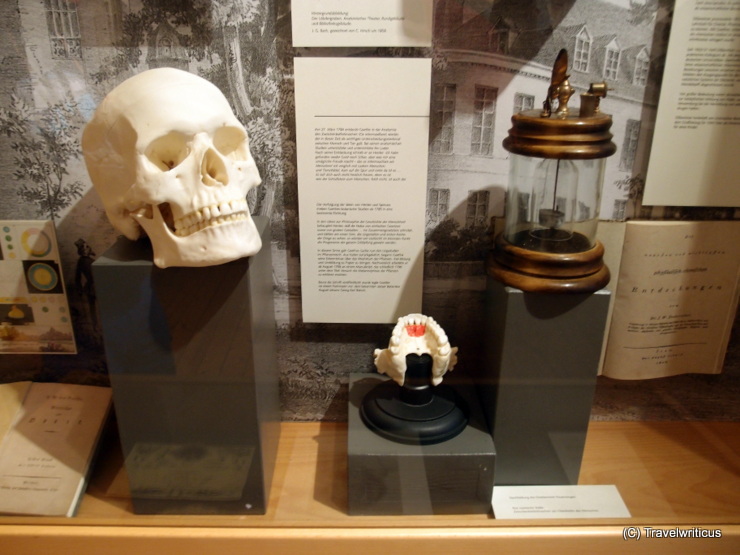
This showcase in the Romantikerhaus in Jena recalls that Johann Wolfgang von Goethe also worked as a scientist. For example, he dealt with the incisive bone. Contrary to his assumption, he was not the discoverer of this bone. [German]
You only see what you know (Goethe)

This showcase in the Romantikerhaus in Jena recalls that Johann Wolfgang von Goethe also worked as a scientist. For example, he dealt with the incisive bone. Contrary to his assumption, he was not the discoverer of this bone. [German]
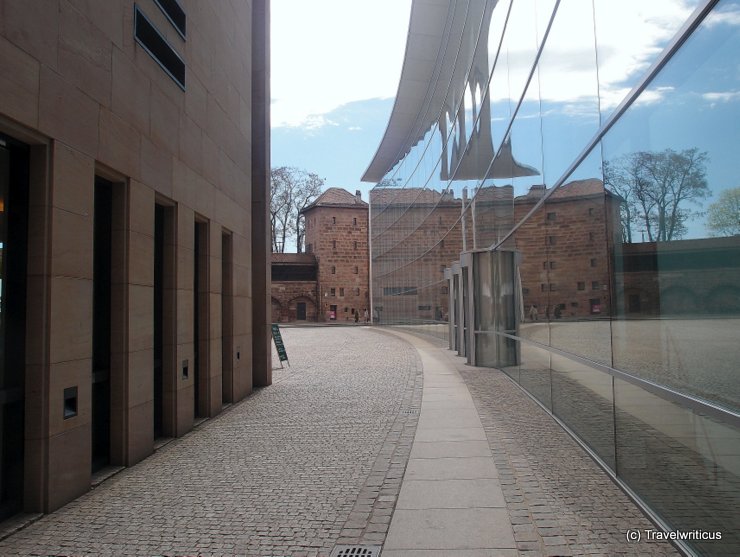
In Nuremberg, there is some modern architecture inside the medieval town walls. As a result, the glass façade of the Neues Museum reflects the city wall like a mirror. By the way, the museum shows pieces of contemporary art and design.
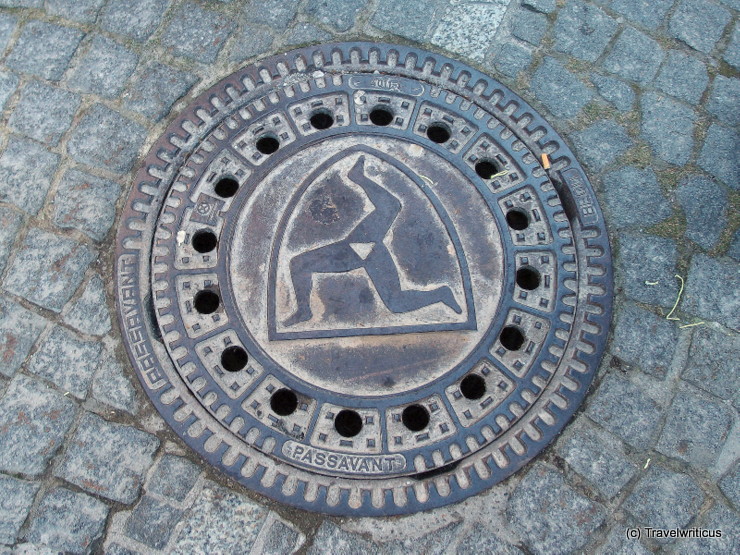
On the manhole covers in Füssen, you see the local city arms showing three legs. This is a fine example of canting arms. The German word for feet is “Füsse”. But why sounds this Bavarian town name like a body part?

The Zwehrenturm in Kassel was a medieval tower within the city’s fortifications, serving as both a prison and an observatory over the centuries. The sundial on the Zwehrenturm dates from the 18th century. [German]
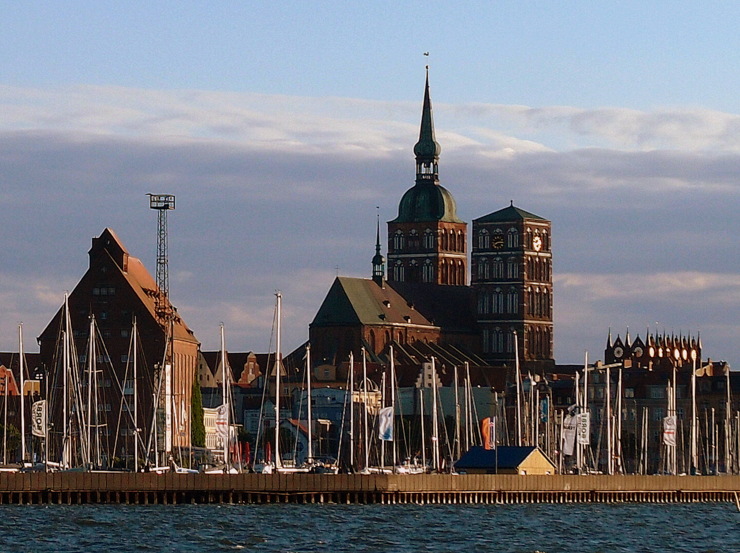
While cruising the Strela Sound with a snug sailing boat, I took this photo of the St. Nicholas Church (Nikolaikirche) in Stralsund. The church offers not only two different towers but also an astronomical clock.
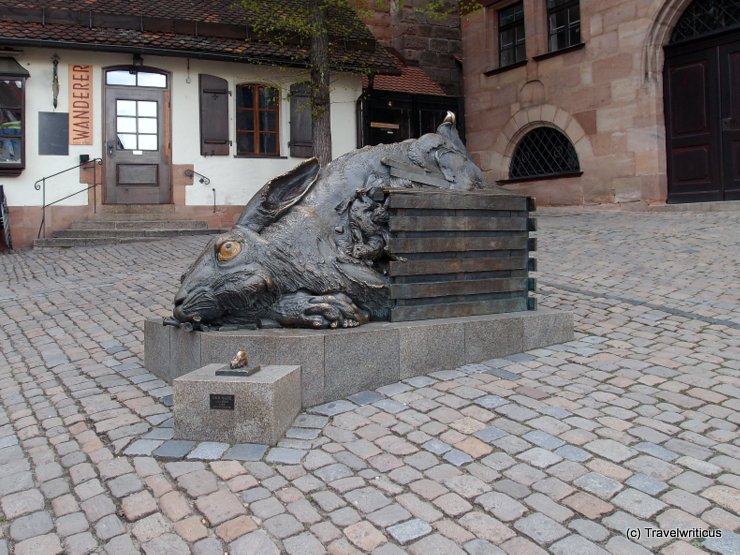
This sculpture represents a female hare. It stands on Tiergärtnertorplatz within sight of the Albrecht Dürer House. The artwork was created in 1984 by Jürgen Goertz. In this work, the artist alludes to the painting of the Young Hare by Albrecht Dürer. [German]
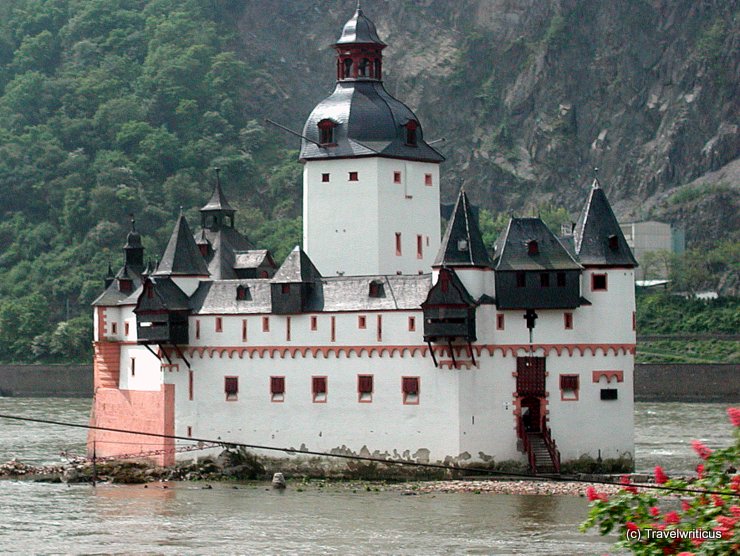
On a train journey along the Rhine Valley from Mainz to Koblenz I took this photo of Burg Pfalzgrafenstein. The building situated on a tiny island served as toll station until 1866. Since 2002 it is part of the UNESCO World Heritage Site Upper Middle Rhine Valley.
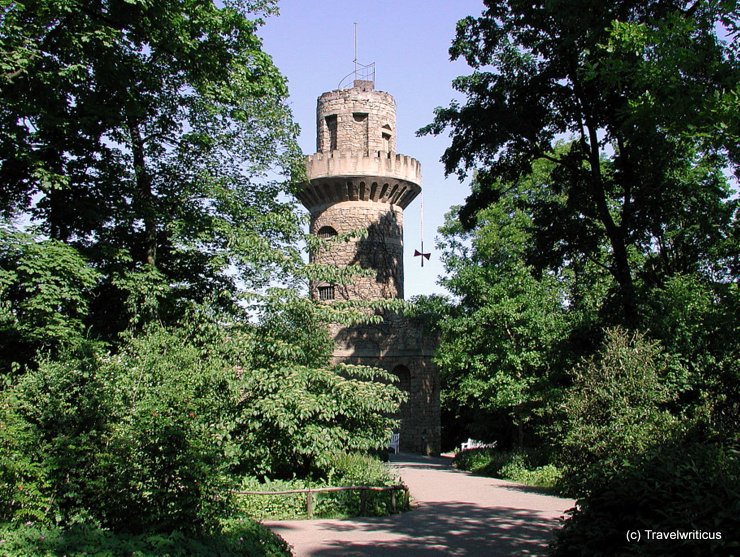
In the fairy tale garden of Ludwigsburg, this tower refers to Rapunzel’s Tower. The building is part of a small castle named Emichsburg, which saw its construction from 1798-1802. The garden is part of a Baroque park on the grounds of Ludwigsburg Residential Palace. [German]

You have this view of Michelsberg Abbey (Kloster Michelsberg) in Bamberg from the rose garden of the New Residence (Neue Residenz). The Benedictine monastery changed into an almshouse in 1803. Today, it houses a retirement home. [German]

The Residenzschloss Dessau, a palace in the style of the Early Renaissance, lost many of its parts during World War II. The remaining wing, the Johannbau, houses the Museum für Stadtgeschichte (Dessau City Museum). [German]

The Old Synagogue in Erfurt is considered the oldest synagogue in Central Europe, which has been preserved up to its roof. Some parts of it date back to the 11th century. Its cellar houses the famous Erfurt Treasure found near the synagogue.

The Mendelssohn House (Mendelssohn-Haus) in Leipzig is a late Classicist building where composer Felix Mendelssohn-Bartholdy spent his last years. Today, it houses a museum about his life and his work. [German]